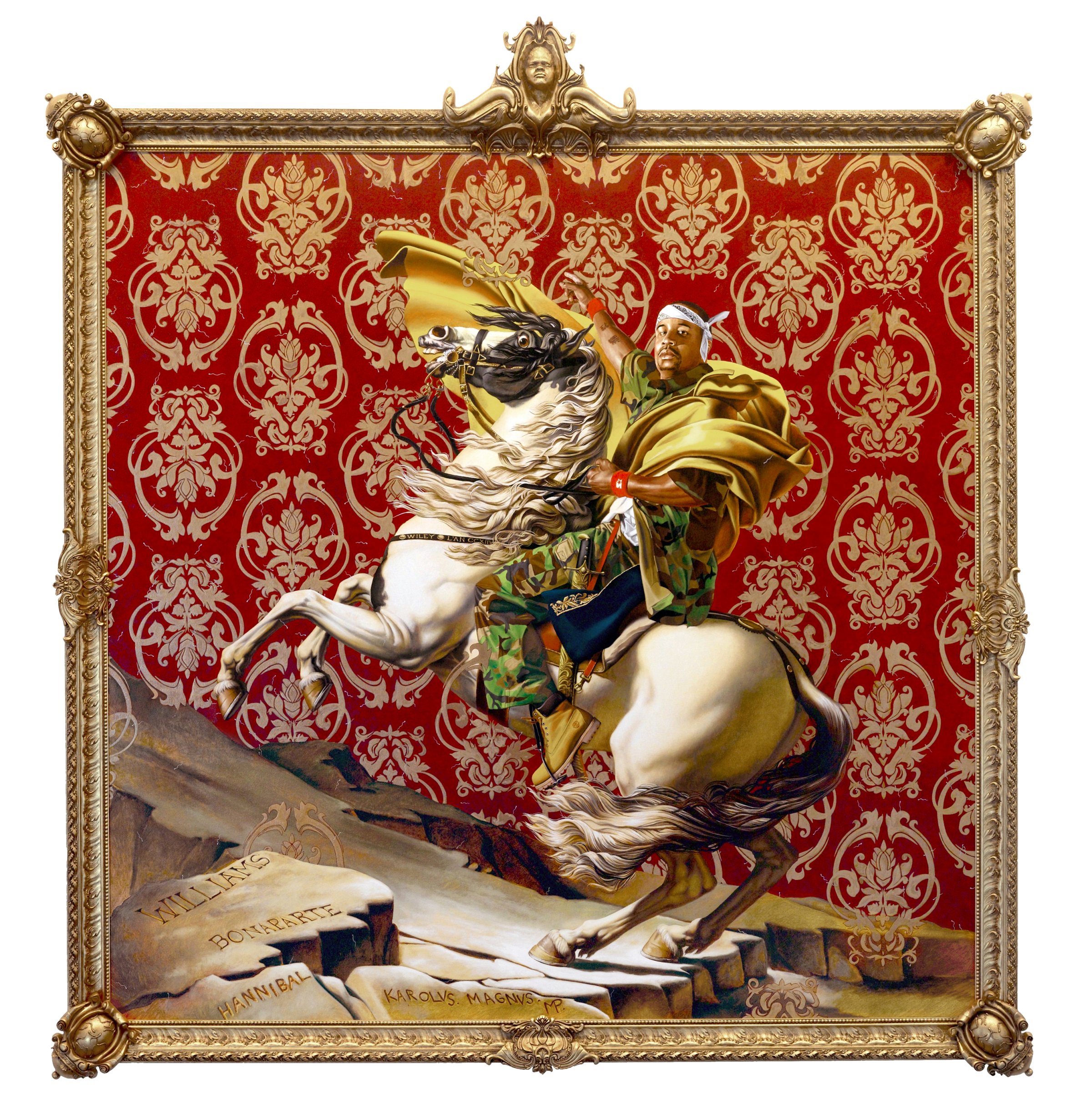
The Chief lesson of “Kehinde Wiley: A new Republic,” an almost phosphorescent career-length survey at the Brooklyn Museum through May 24, is that while Wiley may be something of a one-trick pony, it’s a considerable trick, enlightening and ingenious, often moving and always intriguing. Wiley, 37, arrived at his basic strategy in 2001, not long after getting his M.F.A. from Yale. Recruiting young African-American men off the street in Harlem, he would invite them to leaf through art books at his studio and choose a pose from an Old Master painting. He would photograph them in that posture but costumed in the latest street gear, and then use that shot as the basis for a large photo-realist painting that carried the title of the earlier canvas.
The result? Canny pictures that are a kind of conceptual art with multiple conceptions at work. They flood the zone of Western art with images of black men–people mostly excluded from the canons–while pulling the conventions of older art abruptly into the present. As a final layer of art-historical wild style, Wiley places the men against, and sometimes within, teeming patterned backgrounds drawn from Victorian wallpaper, Rococo filigree and other sources. Or more recently, from the image banks of China, Africa and other locales where he has worked.
Like many portraitists of the past, Wiley is less interested in the personal psychology of his models than in their public masks–how they offer themselves to the world, what they wear, how they “present.” His best paintings draw a line that connects, say, Renaissance bling and 21st century street swagger. They also fluctuate shrewdly between postmodern irony, outright comedy and absolute sincerity. And they do all this while reviving some of the sensory pleasures of classical portraiture, like skillful illusion and rich costuming–which, if you wear them right, turns out to be a perfectly good way to describe camo pants and unlaced Timberlands.
Although Wiley has branched out over time, applying his formula to portraits of women and lately to bronze busts and works in stained glass, after almost 14 years it may be time for a new strategy. Meanwhile, the Brooklyn show, which will move to Fort Worth, Seattle and Richmond, Va., is proof that one trick can be performed in all kinds of satisfying ways.
OVER THE TOP
Jacques-Louis David’s famous equestrian portrait from 1801, Napoleon Crossing the Alps, near left, is a quintessential image of power in full regalia. So is Wiley’s 2005 rethinking of it, Napoleon Leading the Army Over the Alps, at far left. But Wiley’s picture also draws attention to the semi-camp theatricality of David’s original and its almost comically windblown machismo.
ROLE MODELS
In 2012, Wiley made his first series of portraits featuring women, who wore gowns designed by Riccardo Tisci. The Two Sisters, above left, is derived from The Two Sisters, above right, an 1843 double portrait by Théodore Chassériau. Willem van Heythuysen, below right, refers to a 1625 portrait of that name by Frans Hals, below left. The 17th century van Heythuysen was from Haarlem, in the Netherlands. His 21st century spiritual descendant was from Harlem, in Manhattan.
More Must-Reads from TIME
- Introducing the 2024 TIME100 Next
- The Reinvention of J.D. Vance
- How to Survive Election Season Without Losing Your Mind
- Welcome to the Golden Age of Scams
- Did the Pandemic Break Our Brains?
- The Many Lives of Jack Antonoff
- 33 True Crime Documentaries That Shaped the Genre
- Why Gut Health Issues Are More Common in Women
Contact us at letters@time.com